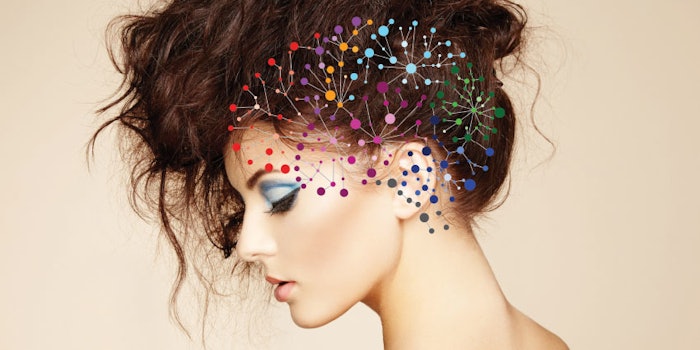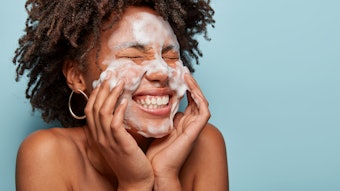
Read the complete article in the C&T July/August 2023 digital edition.
Mintel recently forecasted that the focus on the self — the intersection of holistic beauty, rituals and scientific solutions across the emotional and physical axis — will become even more prominent.1 According to the company, 43% of U.S. consumers are paying more attention to their mental health and well-being, which is up 6% from 37% in 2020. Not surprisingly, 53% of consumers also said the pandemic made them want to take better care of their mental health.1
As the industry knows, the physical, mental and emotional facets of the self align along the skin-brain axis and can influence one another. Exactly how they achieve this has been the focus of much recent research, forging a path deeper into the psychodermatology space. Such work has been led in many cases by a nearly 100-year-old scientific technique: electroencephalography (EEG).2 This article highlights select examples of its application to advance skin care.
Product Texture, Skin Feel and Brain Changes
Emotions are clearly a complex phenomenon. To relate them to product perceptions, measurements of brain responses can help, in conjunction with subjective consumer surveys and focus groups, vital signs and plasma and salivary stress markers.
As stated, EEG is a method to measure changes in brain waves. Briefly, the EEG spectrum is divided into different frequency bands: from gamma (30–44 Hz), beta (13–30 Hz), alpha (7.5–13 Hz) and theta (4–8 Hz), to delta (1–4 Hz). Each band correlates to different brain states. In an awake state, a person’s eyes are open and gamma and beta waves are dominant. When falling asleep or in a state of relaxation, alpha activity increases. Alpha waves are associated with mental coordination, calmness, integration and learning states of the brain. Theta waves occur during the transition from a conscious state toward sleepiness and deep meditation; during deep sleep, delta waves are prominent.
In recent years, EEG-driven research in personal care and dermatology on the effects of skin feel on the brain have been reported and published.3 For example, in 2021, one study investigated consumer emotions during the real-time application of different emulsions on the skin, linking product texture to consumer well-being and emotional impact. Here, the researchers focused on alpha activity in the right and left hemispheres (located above the prefrontal lobe) and the ratio of beta (12−28 Hz) and alpha (8−12 Hz) band power in order to explore arousal.4 A different EEG study focused on chronic itch in burns and linked itching with brain reorganization at the cortical level, characterized by: a changed EEG pattern; decreased alpha wave activity in the occipital channels; and decreased low beta wave activity in the frontal area (under eyes-closed conditions).5
Read the complete article in the C&T July/August 2023 digital edition.
References
- Mintel. (2023, Mar 29). Managing stress and mental wellbeing US 2022. Presented at in-cosmetics Global, Barcelona. Available at https://store.mintel.com/us/health-and-wellbeing/us-managing-stress-and-mental-wellbeing-market-report-2022/
- Britton, J.W., Frey, L.C., et al. (2016). Appendix 6. A brief history of EEG. Available at https://www.ncbi.nlm.nih.gov/books/NBK390348
- Steventon, K. (2020, Apr 3). Evoking emotion: Internal and external factors in sensitive skin. Available at https://www.cosmeticsandtoiletries.com/research/literature-data/article/21835728
- Gabriel D., et al. (2021). Emotional effects induced by the application of a cosmetic product: A real-time electrophysiological evaluation. Available at https://doi.org/10.3390/app11114766
- Miraval, F.K., et al. (2017, May). A preliminary study on qEEG in burn patients with chronic pruritus. Available at https://pubmed.ncbi.nlm.nih.gov/28971055/











